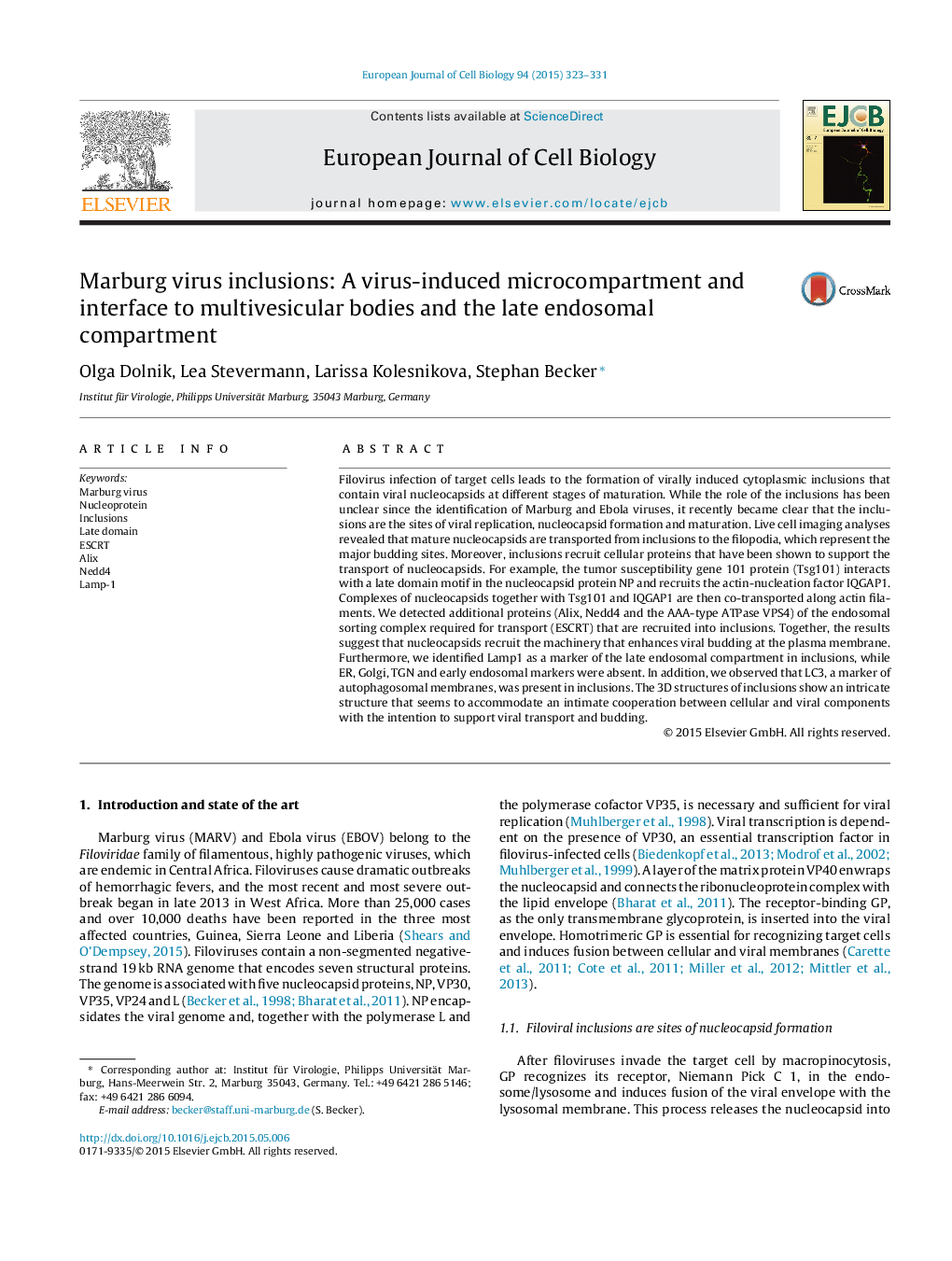| Article ID | Journal | Published Year | Pages | File Type |
|---|---|---|---|---|
| 2178357 | European Journal of Cell Biology | 2015 | 9 Pages |
Filovirus infection of target cells leads to the formation of virally induced cytoplasmic inclusions that contain viral nucleocapsids at different stages of maturation. While the role of the inclusions has been unclear since the identification of Marburg and Ebola viruses, it recently became clear that the inclusions are the sites of viral replication, nucleocapsid formation and maturation. Live cell imaging analyses revealed that mature nucleocapsids are transported from inclusions to the filopodia, which represent the major budding sites. Moreover, inclusions recruit cellular proteins that have been shown to support the transport of nucleocapsids. For example, the tumor susceptibility gene 101 protein (Tsg101) interacts with a late domain motif in the nucleocapsid protein NP and recruits the actin-nucleation factor IQGAP1. Complexes of nucleocapsids together with Tsg101 and IQGAP1 are then co-transported along actin filaments. We detected additional proteins (Alix, Nedd4 and the AAA-type ATPase VPS4) of the endosomal sorting complex required for transport (ESCRT) that are recruited into inclusions. Together, the results suggest that nucleocapsids recruit the machinery that enhances viral budding at the plasma membrane. Furthermore, we identified Lamp1 as a marker of the late endosomal compartment in inclusions, while ER, Golgi, TGN and early endosomal markers were absent. In addition, we observed that LC3, a marker of autophagosomal membranes, was present in inclusions. The 3D structures of inclusions show an intricate structure that seems to accommodate an intimate cooperation between cellular and viral components with the intention to support viral transport and budding.
